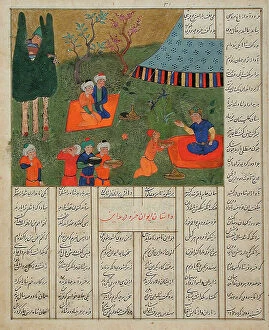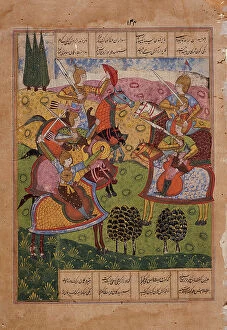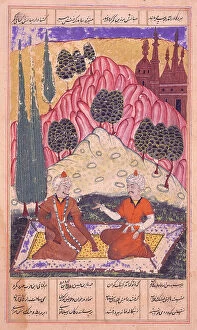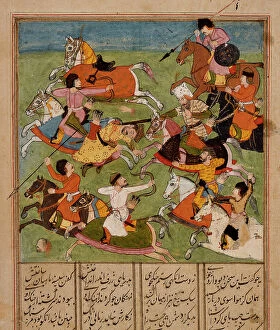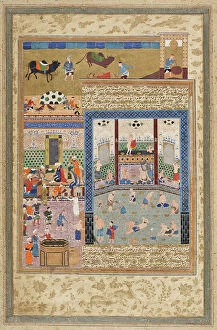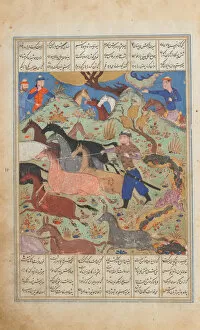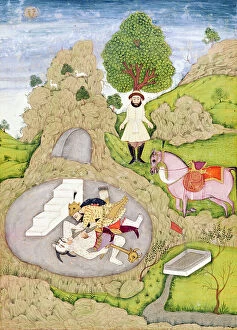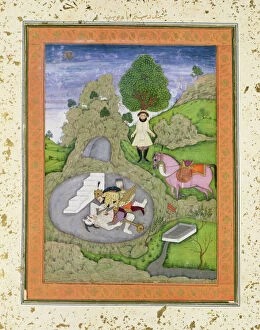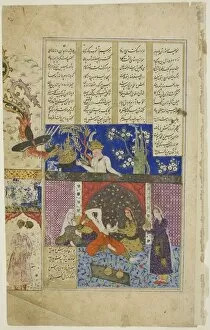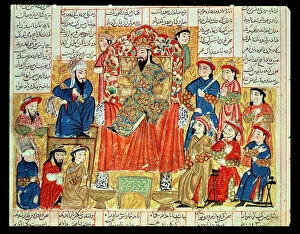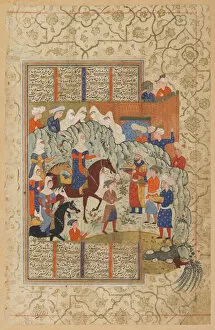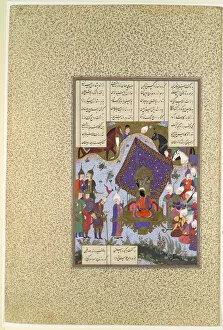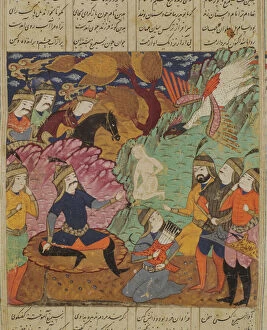Firdausi Collection
"Firdausi: The Master of Epic Tales" Firdausi, also known as Abu l-Qasim Manur Firdawsi, was a renowned Persian poet and the author of the Shahnama, or Book of Kings
All Professionally Made to Order for Quick Shipping
"Firdausi: The Master of Epic Tales" Firdausi, also known as Abu l-Qasim Manur Firdawsi, was a renowned Persian poet and the author of the Shahnama, or Book of Kings. His epic masterpiece is considered one of the greatest works in Persian literature. In his vivid illustrations and captivating verses, Firdausi brings to life the heroic tales and legends from ancient Persia. Rustam, the valiant warrior who kicks back a rock rolled on him by Bahman, symbolizes strength and resilience against adversity. The torture scene depicted in Ms Supp Pers 493 fol. 363v showcases Firdausi's ability to portray intense emotions through art. It serves as a reminder that even heroes face trials and tribulations along their journeys. Kai Khusrau Enthroned Holding a Sword captures the regal power and authority of this legendary king. With ink, opaque watercolor, and gold embellishments on paper, Firdausi's attention to detail shines through. The fight between Piran and Bizn illustrates the clash between good and evil forces within human nature. Through gouache on paper technique used in 1619 artwork by Firdausi himself demonstrates his mastery over various artistic mediums. Beheadings were not uncommon in these ancient tales; Syjawiusz meets his tragic fate while Nouzaur faces a similar end. These scenes depict both the brutality of war but also serve as cautionary reminders about prideful actions leading to downfall. Rustam killing the White Demon portrays an iconic moment where heroism triumphs over darkness. This thrilling encounter exemplifies Firdausi's ability to create suspenseful narratives that captivate readers for centuries. The Death of Radz highlights themes of sacrifice for honor while Battle between Persians and Turanians depicts fierce conflicts between rival nations – showcasing both bravery on one side while emphasizing the consequences of war on the other.



